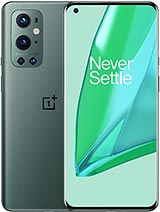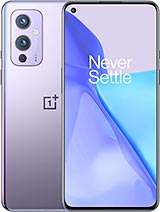OnePlus 9 vs OnePlus 9 Pro: Which should you buy? By Pocket-lint
For OnePlus fans. It used to be really simple to make a buying choice you just buy whatever the latest phone was that OnePlus had launched because it only launched one at a time. But these days it's different and with the OnePlus 9 series this year, it's become even more complicated than ever to choose the right phone. Because this year the company has launched two powerful flagships at two different prices so which should you choose the OnePlus 9 or the OnePlus 9 pro I'm cam button from pocket lint, and I'm hopefully going to help you decide and while you're here, if you could tap that, like button hit subscribe and that little notification bell, that would be marvelous. Now, it's not always you get an OnePlus series of phones where both devices actually look like they belong together, and so the look of the 9 and the 9 pro being close to identical is actually a good thing. Both have that same purposeful camera design, with metallic rings around the primary lenses and a housing.
That's color matched to the back of the phone they're, even similar sizes, with only a millimeter or so difference in height and width, but just because they look identical doesn't mean they are and when it comes to holding them and using them daily, there's a clear difference between them and most of that comes from the shape and the material choices. The pro model has metal edges that are cool to the touch, unlike the regular OnePlus 9, which has shiny plastic edges or, as OnePlus calls it fiberglass infused polymer. That makes it feel a bit less premium and warmer, but it's not a bad decision. It's still stuck with the glass on the back and then there's the fact that the pro has curved glass on the front and the back, which makes the phone seem a bit smaller, somehow making it more comfortable one-handed despite being a taller phone. It's that illusion of slimness.
That makes it more comfortable in these two finishes. Both phones are quite slippery, shiny and attract fingerprints quite easily, so we'd recommend going with one of the ones that are frosted instead to improve the experience and reduce the chance of dropping it or covering the phones back in visible finger grease now, while the pro's curved edges make it the more ergonomic choice, there's a practical reason for going with a flat screen as well typing too thumbed on the keyboard feels easier, because your thumbs aren't tempted to slide away at the sides or miss the keys, and you don't have to be as aware to avoid accidental touches when doing things like gaming or shooting with the camera. Now, on the whole, we think that, with its stronger metal frame and the ip68 rating against water and dust resistance, the pro is technically the stronger device here, but the flat screen on the non-pro made it easier to use day to day. Personally, I just prefer having a phone that I can pick up and use without thinking too much about it, but that's very much a personal preference, not a right or wrong thing now, as well as in design it's in display, where you're going to see the biggest difference here, at least on the spec sheet. Both have AMOLED panels capable of reaching up to 120 hertz refresh rates, but the pro has higher resolution.
It has a quad HD panel versus the full HD panel on the non-pro, and that means once you enable the higher resolution you get a sharper image and sharper details, get close to the screen, and you'll easily spot the difference. When looking at things like rounded edges of app icons or fine text, we also noticed it during gaming, where lines of background graphics look quite smooth on the pro they're a little more jagged on the regular model. The other difference is that, while they both reach the same high refresh rate, only the pro is equipped with adaptive tech and that can automatically shift the refresh rate based on what's on the screen. So if you're reading still text, it can drop all the way down to 1 hertz, which means it's better at conserving battery when the screen is on and when the high refresh rate is selected in terms of color balance and brightness, though, with the two set to their default vivid mode. They look very, very similar, in fact, they're virtually identical and with very little video and gaming content actually available in resolutions over full HD, particularly over streaming.
Apps like Disney, plus and Netflix, there's not a huge difference in experience either. Although we did find that the regular model seems to up the contrast, a little more, creating an unrealistic black crush in some areas. Now OnePlus has made a big deal about his partnership with Hasselblad, and this is just the first out of the three years that it's signed up for. OnePlus has leaned on the iconic medium format, camera maker to help it with image tuning, as well as changing parts of its interface. The long and the short of it here, however, is that for the most part, the two primary cameras on both phones are very similar.
Both have the same 50 megapixel sensor in the ultra-wide lens and both feature the 48 megapixel sensor in the main one, although the pro uses a newer version of Sony's sensor technology, compare images between them, and you won't see a lot of differences if any between the 9 and the 9 pro, except that sometimes the 9 pro tends to make things a little more cool and washed out, highlighting the blues more than the oranges and the reds. While the 9 is a bit warmer when they play nice, they actually are the best cameras. OnePlus has ever used, but they don't always play nice, and we actually had more issues with the pro than on the regular one. There were sometimes a huge difference in color balance between the wide and the ultra-wide lenses on the pro which left me scratching my head a bit and the pros' telephoto 3.3 times. Zoom camera should have made the experience more versatile and appealing, but it didn't always perform as I'd expect in some instances completely ruining finer details, making a mess of tree branches and bushes.
Once we started to use that zoom camera now the regular phone, the non-pro version gave us a much more balanced image between those two cameras offering a warm vibrant picture, similar to what we saw on the Oppo find x3 pro and that phone costs nearly twice as much. So in this instance, the non-pro version is the more consistent of the two delivering images that are the same across both lenses, or at least a bit closer to being the same as the two that are on the pro so based on that experience, we definitely wouldn't suggest getting the pro for its supposedly better cameras, because actually they don't really add anything. The zoom can be handy if you're not tackling tree-laden landscapes, but the two-time zoom, using the main camera on the regular OnePlus 9, is just as useful and in our experience, more reliable. Now, if general all-round performance is what's most important to you, I'm happy to tell you that saving money on the regular OnePlus 9 versus the pro won't leave you having to compromise in any way. Both phones come with that same snapdragon, 8 processors, with the same amounts of ram and storage, plus the same speeds and 5g capabilities, and the fact that they can both go up to 120.
Hertz also means the speed of animations is identical. What that means is that, thanks to OnePlus usual software prioritization, it doesn't matter what game you load or whether you're browsing the web or launching any apps. Your phone will feel really quick and really responsive. OnePlus is the master at making phones feel speedy and both of these stick to that making them probably the two fastest feeling phones on the android market. They both even have the same battery at 4 500 William hours, which is technically two separate 2, 250 William hour cells to optimize its charging speed.
They both have the same capacity, there's not a huge amount of difference in how long these batteries last either. Despite having the lower resolution display, we didn't see a huge amount of extra longevity from the regular model, at least not with 120 hertz enabled both can comfortably make it through the day with about 30 or so left over after three or four hours of gaming, social media and music during the day and if you're, a very light user there's a chance. You might just push it to two days, but I never quite managed to make it that far, not that it matters anyway, because both charge so fast that battery anxiety is literally never a problem. They both ship with 65 watt warp charge adapters that can fill them up in under half an hour. They both charge wirelessly too, and if you already have a wireless charger, they can go all the way up to 15 watts using the standard QI technology.
The pro is equipped with even faster 50 watt wireless charging, though, which is fantastically fast, but only works. If you buy the extra one plus warp charge, 50 wireless stand, which, when you're already paying more to get the pro, seems like yet another expense just to get additional speed. Pushing the overall cost higher in the end, it feels like there are two reasons to get the pro over: the regular OnePlus 9. The build and design. That's if you like those curved edges on the glass and the display that extra sharpness does add an extra dimension to the viewing experience.
But if what's most important to you is the overall speedy performance, practicality and cameras, there's really no reason to pay more for the pro personally, if I was buying one I'd go with the regular and not the pro save myself a couple of hundred pounds in the process. Let me know what you think: does the pro do enough to convince you to spend more money on it or is the flat screen on the regular one? More appealing to you use the comments down below to shout at me. I've been cam, I'm at cam button on Twitter. You can follow me there or ask me any questions you like. If you did like this video, please do tickle that, like button hit, subscribe and tap the notification bell to make sure you don't miss any more of our videos I'll catch you again.
Next time, bye for now.
Source : Pocket-lint


























